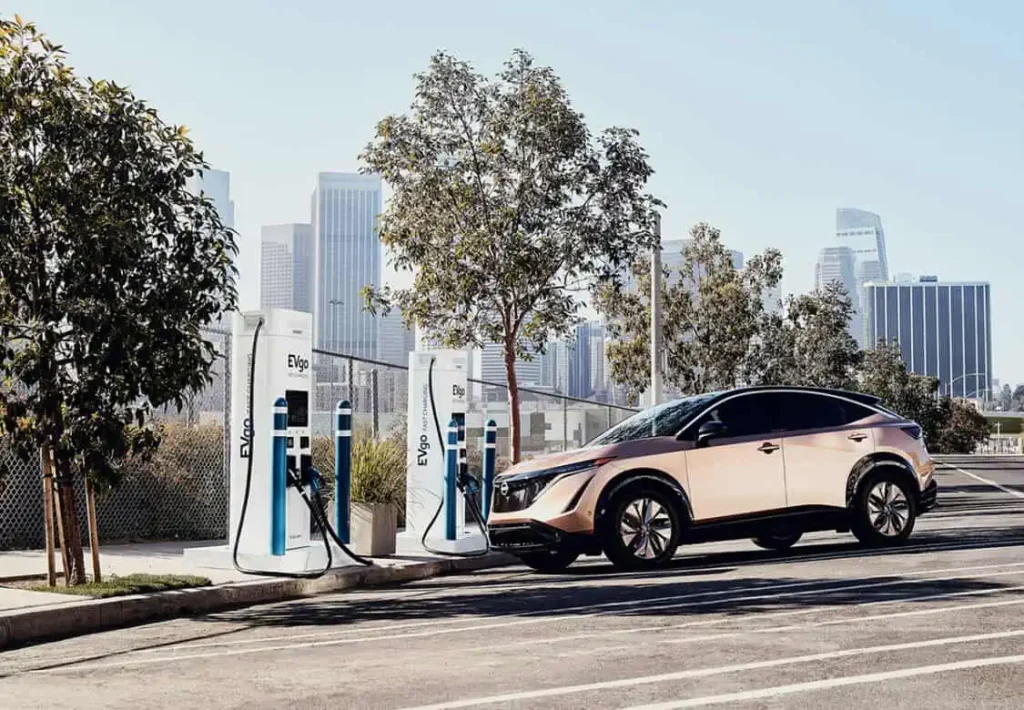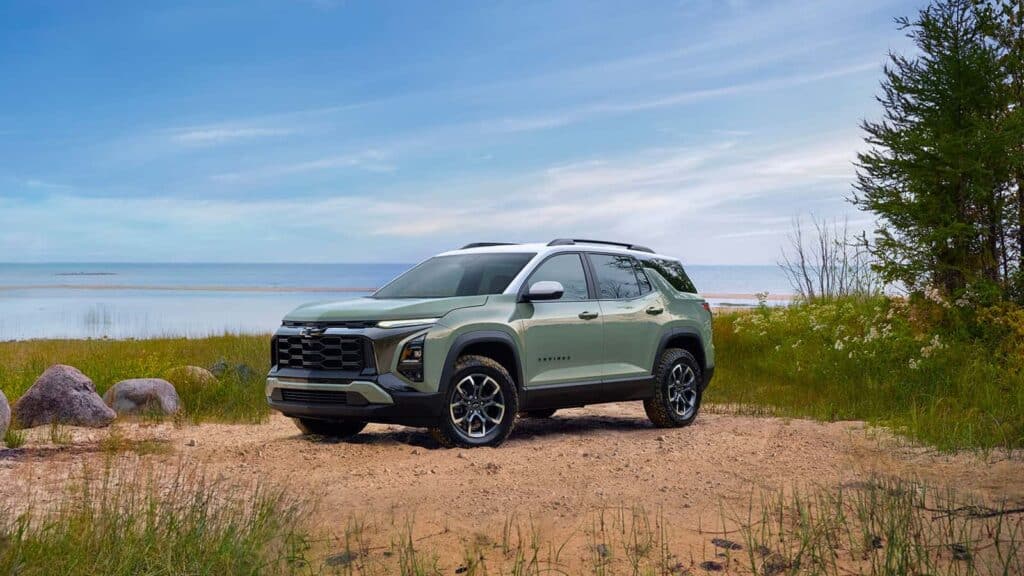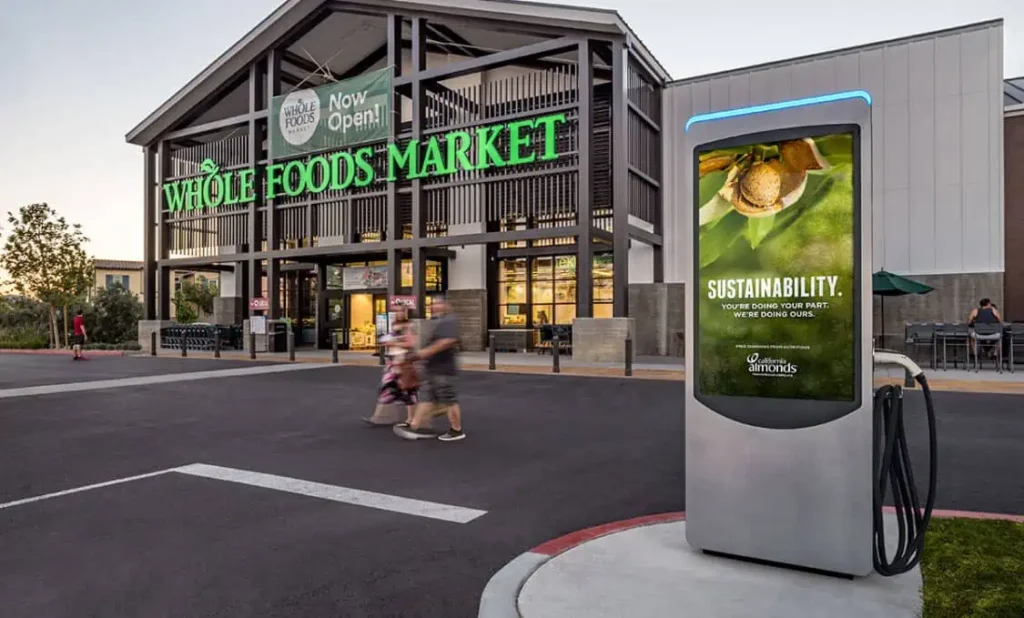EV Advocates Celebrate Milestone: 100,000 EV Chargers in California
California has long been an innovation leader for the United States. One shining example of this is the state’s initiative in the American EV revolution. In fact, the number of EV chargers in California has reached the 100,000 milestone, marking the state as a forerunner in driving the nation toward cleaner transportation.
Among other states, California has the most significant history of EV adoption, described in Director Chris Paine’s 2006 documentary “Who Killed the Electric Car?” about the attempted EV revolution in the 1990s. The film focuses primarily on GM’s ill-fated, first mass-produced EV, the EV1. The EV1 was only available in California, created from a 1990 zero-emissions vehicle mandate from the California Air Resources Board.
The mandate required the seven major original equipment manufacturers in the United States to offer electric vehicles to drivers. This was required in order for the OEMs to continue selling their gasoline-powered vehicles in California.
Paine’s film detailed how the EV1 was taken back from heartbroken lease-holders and crushed. This effectively ended the American EV revolution in the 1990s. EVs didn’t resurface again in any significant numbers until BMW’s release of its MINI E in 2008.
A Historic Milestone of 100,000 Public EV Chargers in California

On March 1, 2024, Governor Gavin Newsom announced that there are now more than 100,000 public and shared private EV chargers in California, not including 500,000 more at-home chargers that Californians have installed for personal use.
This incredible news came within weeks of the California Energy Commission approving a $1.9 billion investment plan to accelerate a Clean Transportation Program in California. The funding is part of the larger $48 billion dollar California Climate Commitment. Additionally, the governor announced that thousands of dollars in grants and rebates are now available for low-income Californians at ClimateAction.ca.gov.
Governor Newsom has been an important figure in the state’s electrification of its transportation sector. In 2023, Governor Newsom signed a bill to provide a dedicated source of funding for zero-emissions vehicle infrastructure through 2035. In 2020, the governor signed an executive order calling for a rule requiring all new car sales to be zero-emission by 2035.
The grants and incentives are very impactful. In California, one in every four new cars sold in 2023 was zero-emission. Also in 2023, the state surpassed its goal of selling 1.5 million zero-emission vehicles.
Public EV Chargers Are Essential for EV Adoption
Public EV chargers play a key role in EV adoption. So far, the early adopters have been mostly single-family homeowners.
Homeowners have the easiest option for charging their EVs: charging at home. Public charging is a necessity for those who can’t charge at home.
More Multifamily EV Charging Is Needed
For multifamily dwellers, currently about one-third of the population, owning an EV is much more difficult, as few of these housing units have EV charging installed. Installing multifamily charging is particularly difficult, as it involves multiple stakeholders, including property owners and homeowner associations, who may not be motivated to do the installations anytime soon.
Public EV chargers serve multifamily drivers who can’t charge at home, as well as homeowners on extended trips, or homeowners needing additional charging in their local areas.
Californians Purchased a Record Number of EVs in 2023, 29% More Than 2022
A recent report from Veloz, a California-based EV adoption nonprofit, and the California Energy Commission showed amazing progress for EV adoption in California. In 2023, Californians added 446,961 new light-duty zero-emissions vehicles to the state’s roads, an astounding advancement from 345,818 in 2022 and significantly more than 250,279 in 2021.
California Leads Other States in EV Adoption

There are many reasons California leads other states in EV adoption. The California Energy Commission has made numerous significant advancements to clean energy and clean transportation in California for many years.
The accelerated adoption of EVs in California is attributed to a variety of factors. These include a combination of favorable government policies, increased consumer awareness, and substantial investments in EV charging infrastructure throughout the state.
California’s state government has provided a large number of incentives — including tax credits, rebates, and charging and fueling infrastructure grants — to make EVs more affordable for drivers. The Clean California Local Grant Program is one example. The state was also one of the first to install a solar powered EV-charging station. Caltrans construction is becoming more highly electrified, as another example.
The state’s stringent emission standards have served as a model adopted by other states. California’s commitment to reducing its carbon footprint has spurred the proliferation of EVs and also inspired other states to act accordingly. California’s successful tech industry and affluent consumer base are two other factors that have contributed to the widespread acceptance of electric vehicle technology.
What More Could California and Other States Do to Drive EV Adoption?
Individual states play an important part in American EV adoption, beyond simply building more EV chargers in California and other states. The movement from gasoline-powered transportation to electric transportation is even more earth-shattering than the initial move from horse-drawn carriages to powered vehicles. While EV technology is superior to gas, and EVs would eventually take over from gas vehicles, state and federal government assistance is needed to move the process forward more quickly in light of the ever-present and pressing climate emergency.
Grants and funding from the federal government, along with California and other states, are making amazing progress for EV adoption. However, more could be done. The federal government and states could learn from Norway, which boasted 82% EV adoption in 2023. One of the ways the Norwegian government achieved this incredible feat was that it incentivized the purchase of EVs by offering free parking for EVs. Additionally, EVs were allowed to use bus lanes and enjoyed toll-free driving in Norway. The Norwegian government also exempted EVs from taxes on car purchases.
U.S. states are encouraged to take these steps, including waiving DMV fees for EVs.
EV Adoption Is Needed to Fight Climate Change

Unlike the harmful carbon emissions from polluting gas-powered internal combustion engine vehicles, EVs have zero emissions.
According to the Environmental Protection Agency, the transportation sector is one of the largest contributors to greenhouse gas emissions in the U.S. As stated in the EPA’s 1990-2021 Inventory of U.S. Greenhouse Gas Emissions and Sinks, the transportation sector accounted for the highest portion (29%) of total U.S. greenhouse gas emissions in 2021. By using vehicles with zero tailpipe emissions, Americans would promote a significant shift in climate impacts.

Electric Vehicle Marketing Consultant, Writer and Editor. Publisher EVinfo.net.
Services